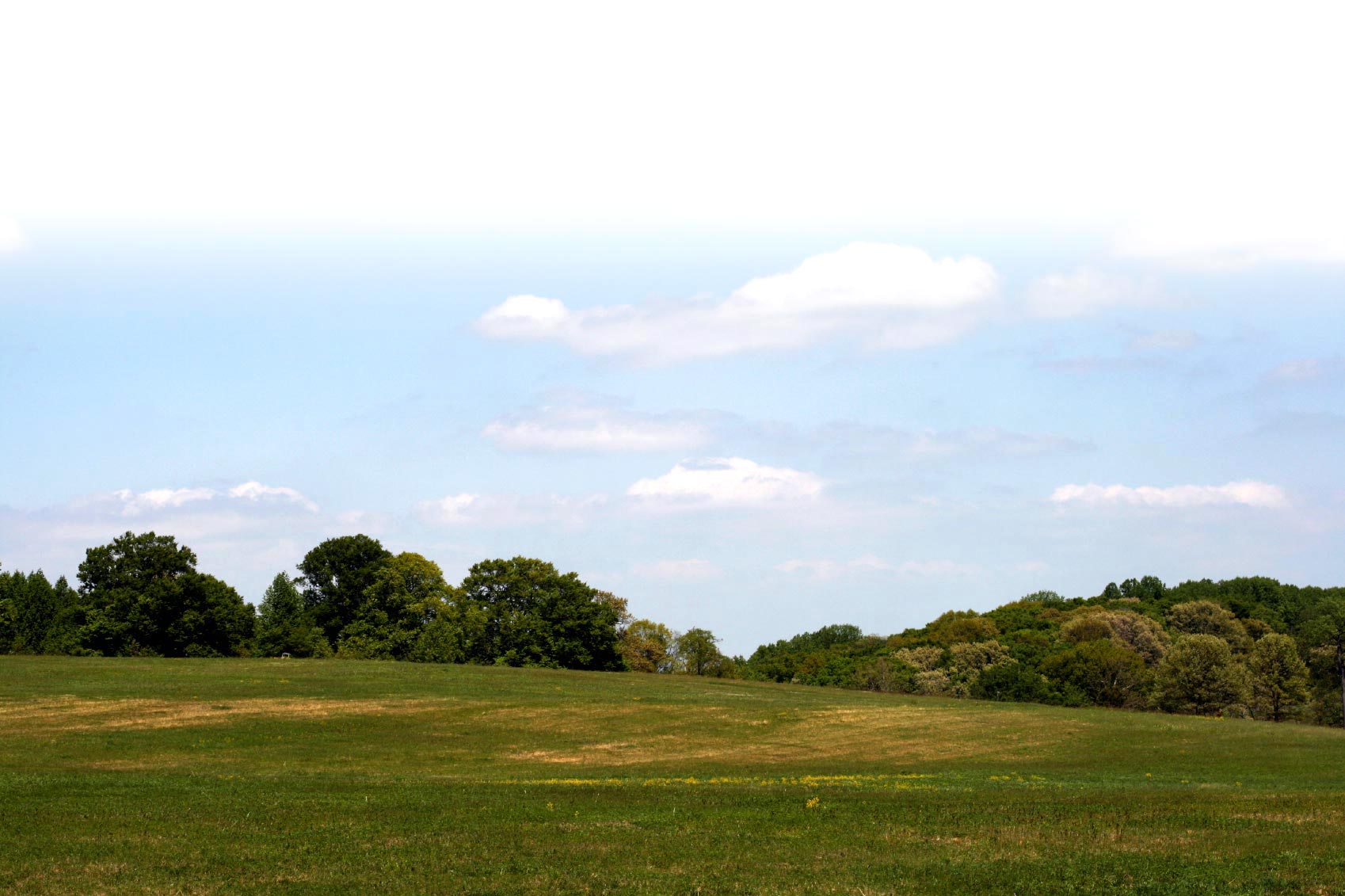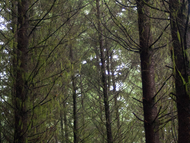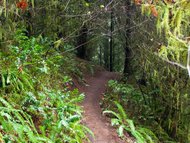New Growth Trail
- Trail System: Lewisburg Saddle
- Trailhead(s): Lewisburg Saddle Gate (Get Directions), Lewisburg Saddle Gate (Get Directions), Lewisburg Saddle Toilet (Get Directions), Lewisburg Saddle Toilet (Get Directions)
- Season: Year-round
- Hours: Daylight
The Lewisburg Saddle Trail Area includes the New and Old Growth Trails to the northeast of the parking area, and the Alpha and Ridge Trails to the southwest. The Old Growth and New Growth Trails are a short hike from the trailhead on the 580 Road, and allow visitors to experience and learn about two very different forest types as they traverse through an old growth stand and a younger, more intensively managed stand. The Alpha and Ridge Trails are particularly popular with the mountain bikers and are accessed via the 600 Road.
Located in the Lewisburg Saddle area of McDonald Forest, New Growth Trail can be accessed from the 500 Road gate at the Lewisburg Saddle. The Lewisburg Saddle gates are located along NW Sulphur Springs Road between NW Lewisburg Avenue and NW Soap Creek Drive. The Lewisburg Saddle gate is home to an information kiosk with brochures, as well as a port-a-potty. To access New Growth Trail, follow the 580 Road to the entrance of the trail, which will be on the north side of the road. New Growth Trail can also be accessed from Old Growth Trail, which connects to the western end of the trail. New Growth Trail is a hiker-only trail. New Growth Trail passes through an area of McDonald Forest that is managed for high-quality wood products. This area of the forest demonstrates plantations with moderately long rotations that emphasize growing high-quality Douglas-fir wood. The wood produced in this area is used mainly for exposed beams and other high-quality structural products. New Growth Trail is just under half of a mile long with a 66 foot gain in elevation. This trail was created informally by researchers more than twenty years ago for the sole purpose of providing access to their data plots. The researchers wished to keep their plots closed to the public while the trees were young in order to maintain the integrity of the study.
Now that the trees have developed, the trail has been hardened with gravel, allowing the public to observe the study. The goal of this study is to see how spacing effects tree growth with respect to height, diameter, volume, branch size, and survival rate. Interpretation located along the trail provides further information about the study. As you walk along this trail, be sure to take a look and notice the deliberate spacing between the trees of eight, ten, twelve, or fifteen feet. Can you see differences in tree growth?
Trail description by: Oregon State University College of Forestry




